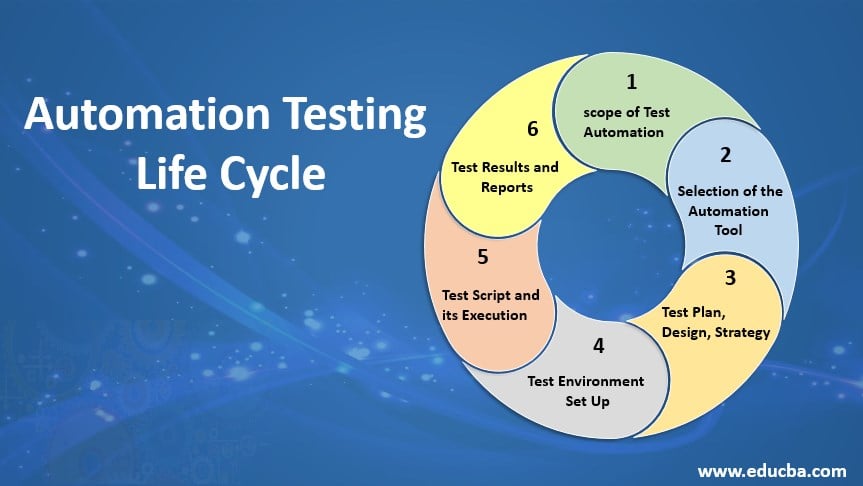From Handbook to Automated Testing: A Comprehensive Guide to Transitioning Smoothly and Efficiently
In the realm of software application screening, the shift from manual to automated processes has actually come to be a significantly essential change for organizations seeking to enhance efficiency and precision in their testing practices. The journey from guidebook to automated testing is not without its difficulties, but when come close to purposefully and with a clear strategy in mind, the advantages can be substantial.
Advantages of Automated Checking
Automated testing uses countless advantages, boosting performance and precision in software program development processes. Automated examinations can be run all at once on multiple devices and running systems, substantially speeding up the testing stage contrasted to hands-on screening.
Moreover, automated testing makes certain a higher level of accuracy in identifying issues. Considering that automated tests adhere to predefined manuscripts, human error is decreased, bring about even more reliable test results. Consistency in testing is likewise boosted, as automated examinations carry out the very same actions exactly each time they are run. This consistency is vital in making certain that all performances of the software application are extensively evaluated, reducing the likelihood of unnoticed bugs slipping through to production.
Picking the Right Tools

First of all, evaluate your purposes and requirements. Understand the extent of your project, the modern technologies involved, and the ability of your team. This evaluation will assist you figure out the capacities and functions you require in your testing devices.
Secondly, think about the compatibility of the devices with your existing systems and procedures. Smooth integration with your present software growth lifecycle is necessary to make sure a smooth change to automation.
Furthermore, evaluate the scalability and versatility of the devices. As your screening needs progress, the tools should be able to adapt and accommodate adjustments efficiently.
Finally, consider the assistance and neighborhood around the tools. When carrying out automated screening, durable support and an active individual community can offer important resources and support. By meticulously taking into consideration these aspects, you can choose the right tools that line up with your requirements and set the stage for a successful transition to automated testing.
Creating Effective Test Scripts

When crafting test manuscripts, it is important to take into consideration the details demands of the software program being checked and guarantee that the manuscripts deal with all vital functionalities. Descriptive and clear calling conventions for test manuscripts and test situations can boost readability and maintainability. Additionally, including error handling devices within the test manuscripts can assist in determining and dealing with concerns immediately.
Additionally, arranging examination scripts right into modular elements can enhance reusability and scalability, reducing redundancy and enhancing effectiveness in test script upkeep. Normal testimonials and updates to evaluate scripts are vital to keep speed with advancing software program requirements and capabilities. By adhering to these principles, testers can produce durable and reliable test manuscripts that add significantly to the success of automated testing processes.
Integrating Automation Into Workflows
Efficient combination of automation devices right into existing process enhances and improves procedures performance within software application advancement cycles. When integrating automation into workflows, it is essential to recognize recurring tasks that can be automated to conserve time and decrease human error. By seamlessly integrating automated testing devices like Selenium or Appium right into the software application growth lifecycle, teams can attain faster responses on code adjustments, causing quicker insect detection and resolution. This assimilation permits continuous testing throughout the advancement procedure, ensuring that any kind of issues are recognized early, causing higher software application top quality. Additionally, automation can be utilized to set off examinations immediately after each code commit, supplying prompt recognition and maximizing testers to concentrate on more complex circumstances. Proper combination of automation tools click over here requires cooperation between advancement, testing, and procedures teams to establish a unified workflow that enhances performance and effectiveness in delivering top quality software products.
Ensuring a Smooth Shift
Successfully transitioning to automated screening entails careful preparation and mindful implementation to decrease disruptions and optimize efficiency in the software application advancement process - automation testing. To make sure a smooth change, it is crucial to start by performing a complete assessment of the current testing processes and identifying locations where automation can bring one of the most substantial benefits. Involving with all stakeholders early at the same time, consisting of programmers, testers, and task supervisors, is vital for gathering support and buy-in for the automation initiative
Communication is crucial during this transition stage. Clear interaction of the objectives, benefits, and assumptions of automated testing helps to take care of any type of resistance or worries that might arise. Furthermore, giving sufficient training and sources for team participants to upskill in automation tools and methods is vital for making certain an effective transition.

Final Thought
To conclude, transitioning from guidebook to automated screening uses various advantages, including raised effectiveness and integrity. By choosing the ideal tools, creating efficient test manuscripts, and incorporating automation perfectly right into operations, companies can make sure a smooth and effective shift. It is vital to welcome automation as a beneficial possession in software application testing processes to boost overall high quality and performance.
In the world of software testing, the change from handbook to automated processes has actually come to be check this a progressively important change for companies seeking to boost effectiveness and accuracy in their screening practices. Automated examinations can be run concurrently on numerous devices and running systems, significantly speeding up the screening phase contrasted informative post to hand-operated screening. Consistency in screening is likewise boosted, as automated tests execute the exact same actions precisely each time they are run.To ensure the successful execution of picked screening devices, the creation of efficient test scripts plays a vital role in validating the functionality and efficiency of automated processes - automation testing. By adhering to these principles, testers can develop effective and durable test manuscripts that add significantly to the success of automated testing procedures